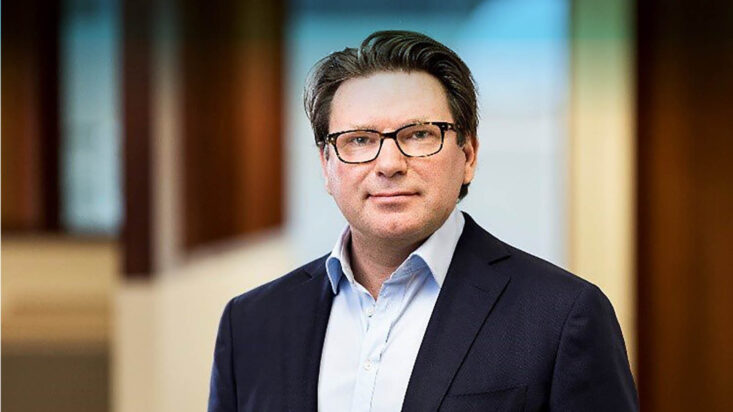A new core for balanced portfolios
It seems to be a rite of passage these days, investment bankers heading out on their own to start asset management businesses. Times are good. So good that the Australian market is flooded with boutique investment managers ranging from global equity to small cap strategies seeking to build their careers and profitable businesses at the same time. Yet recent history has shown that markets are fickle and with growing evidence that investors underperform the funds in which they invest, perhaps its time for a new direction. Enter Davin Hood and Tom Rachcoff.
Hood and Rachcoff are the brain’s trust of multi-asset manager Cor Capital. Both have long and storied careers, Hood with time spent at UBS and Citigroup, in private wealth, and Rachcoff at Credit Suisse and Merrill Lynch leading global equity teams. But this isn’t another story about an equity manager, far from it. The group run what was commonly known as a ‘balanced fund’. Historically, balanced funds offered investors ‘balance’ across asset classes and economic risks. That was until the focus of the sector moved to ‘relative’ performance and a flood of mandated contributions ‘forced’ multi-asset strategies into running broadly similar portfolios rather than risk underperforming and losing members. With March in our rear-view, we know all too well how that turned out.
Keep Me Rich, Don’t Lose My Money
To understand the strategy, one must understand the reason it was established. The story goes that Cor Capital was the brainchild of Davin Hood. Realising his client base of High Net Wealth investors were more focused on absolute returns and capital preservation, tiring of the volatility and the seeming obsession with long-term forecasts, he thought there must be a better way. With the key support of long-term clients, the team set out to create a real return strategy of the future. As the foundation investors in the fund were experienced businesspeople with significant wealth and already high levels of economic exposure through their family businesses, initial investors had little interest in the day to day vagaries of markets, nor did they wish to experience the volatility that comes with modern day equity-biased balanced funds.
The objective was simple, but at the same time complex. The strategy would seek to deliver the holy grail of investment advice; stable investment returns regardless of market conditions. Most importantly, the strategy would be structured to minimise the large drawdowns, like those experienced during the dotcom boom, the GFC and in 2020. Research has shown that the most important part of any investment strategy is remaining exposed to markets and the benefit of compounding returns by avoiding large losses. As the experiences of the last decade has shown, the only way to achieve this is to have a sound and disciplined investment policy in place.
The solution, according to Hood and Rachcoff, is more closely aligned to the ‘Permanent Portfolio’ made famous by Harry Browne. Often compared to Bridgewater Associates ‘All-Weather’ portfolio, the Cor strategy differs by not using leverage nor seeking parity of risk between asset classes. The Permanent Portfolio has the core focus of having investments that will perform in each type of economic condition being recession, economic growth, inflation and deflation. The Permanent Portfolio, which has beauty in its simplicity, suggests holding twenty five percent in four separate asset classes: Equities, Government Bonds, Cash and Precious Metals. The last two are probably the asset classes most maligned by investors and advisers alike, due to their perceived opportunity cost. Yet, the Cor Capital approach has continued to outshine the competition on both return and risk metrics.
Proof is in the Pudding
With a track record now extending into its eighth year, the strategy has continued to deliver at the most important times. Over the last twelve months the Cor Capital strategy has delivered a return of 5.6 per cent placing it in the top 10 percent of multi asset strategies over one, three and five year periods. By comparison, the Morningstar Balanced Index, a so-called Best of Breed approach, has returned just 0.3 per cent over the same period and the Median Balanced Super Fund delivered no returns at all (0.0).
Given the perceived simplicity of the strategy it may seem prone to copycats, who believe they can replicate it do deliver the same returns. Yet the secret of the strategy’s success is hidden. It is essentially twofold. The most important task for Hood and Rachcoff is the threshold rules-based rebalancing at various levels of the portfolio. This occurs both between and within the asset classes based on changing valuations, both comparative and absolute, which grants investors a unique source of return not tied to holding high levels of risky assets. The original Permanent Portfolio suggested rebalancing as rarely as once per year, yet as conditions have evolved in the 2010’s this has clearly needed to increase in regularity. The ability to harness volatility for added returns serves investors well, especially in a portfolio context as we are likely to experience higher volatility and more uncertainty over the near future.
The second secret is in applying nuance to the equities exposure, managing the portfolio in an equal weighted fashion with a tilt to global growth that has seen significant outperformance relative to passive equity strategies since inception. Additionally, many investors hold little if any exposure to real assets including precious metals. The significant strategic exposure to precious metals, investors have significantly participated in the rise of physical gold and silver on the back of growing fear of currency devaluation and inflation. Importantly, regular re-balancing within the portfolio back to neutral weights has historically granted investors a less volatile approach to holding precious metals.
2020 has exposed a long list of ‘liquid alternatives’ strategies that promised everything but ultimately delivered little in the way of capital protection or positive returns. By comparison, according to Hood, the Cor strategy fell just 3.8% in the month of March, compared to -20.6% for the ASX 200 and similarly -1.3% versus -7.7% in February, offering protection at the most important time.
With traditional equity and bond market valuations looking stretched advisers are increasingly seeking out defensive alternative strategies to protect client portfolio. They could do worse than taking a closer look at the evolution of this long running Permanent Portfolio approach.










